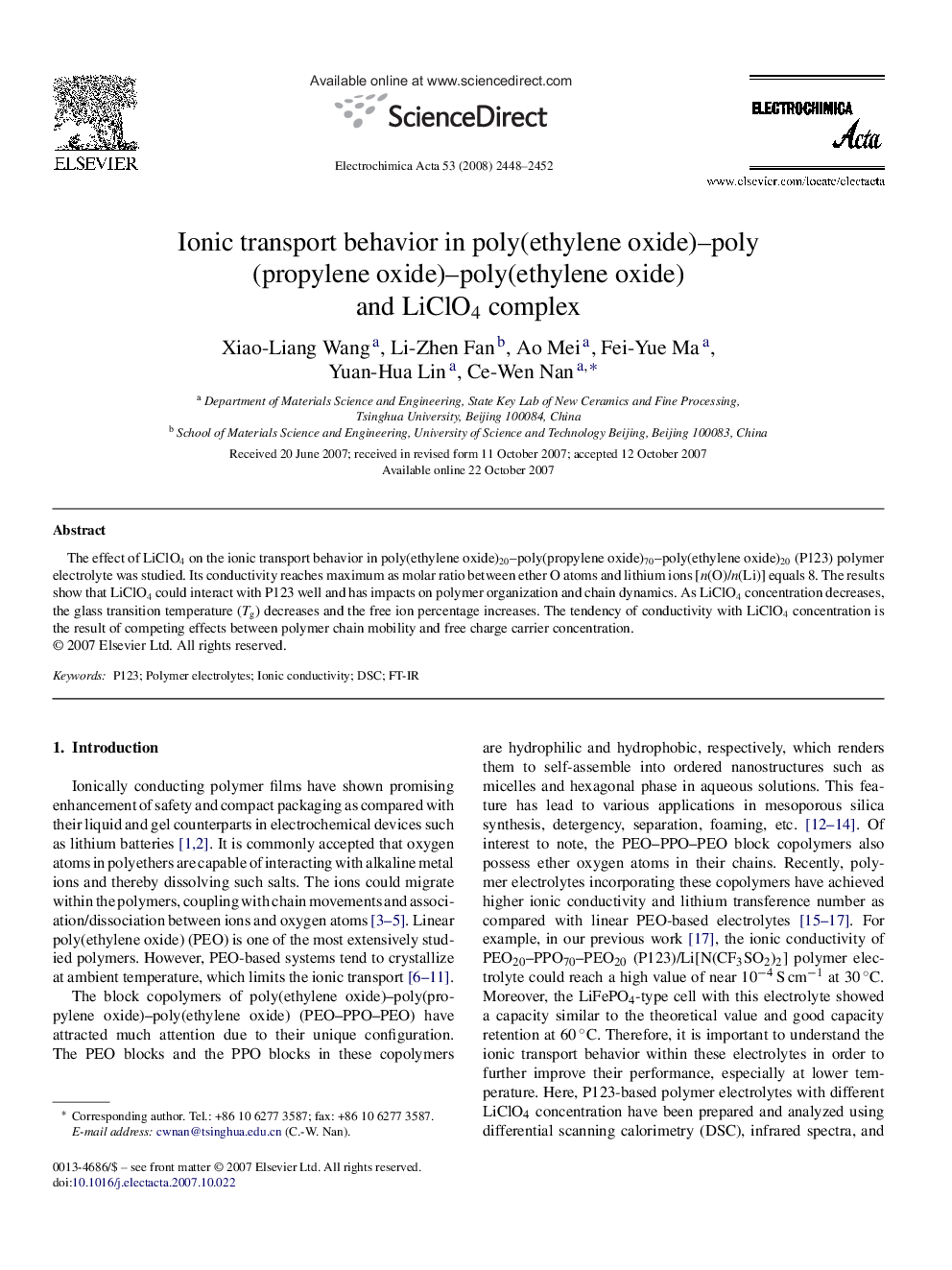| Article ID | Journal | Published Year | Pages | File Type |
|---|---|---|---|---|
| 193879 | Electrochimica Acta | 2008 | 5 Pages |
Abstract
The effect of LiClO4 on the ionic transport behavior in poly(ethylene oxide)20–poly(propylene oxide)70–poly(ethylene oxide)20 (P123) polymer electrolyte was studied. Its conductivity reaches maximum as molar ratio between ether O atoms and lithium ions [n(O)/n(Li)] equals 8. The results show that LiClO4 could interact with P123 well and has impacts on polymer organization and chain dynamics. As LiClO4 concentration decreases, the glass transition temperature (Tg) decreases and the free ion percentage increases. The tendency of conductivity with LiClO4 concentration is the result of competing effects between polymer chain mobility and free charge carrier concentration.
Related Topics
Physical Sciences and Engineering
Chemical Engineering
Chemical Engineering (General)
Authors
Xiao-Liang Wang, Li-Zhen Fan, Ao Mei, Fei-Yue Ma, Yuan-Hua Lin, Ce-Wen Nan,
